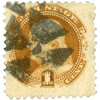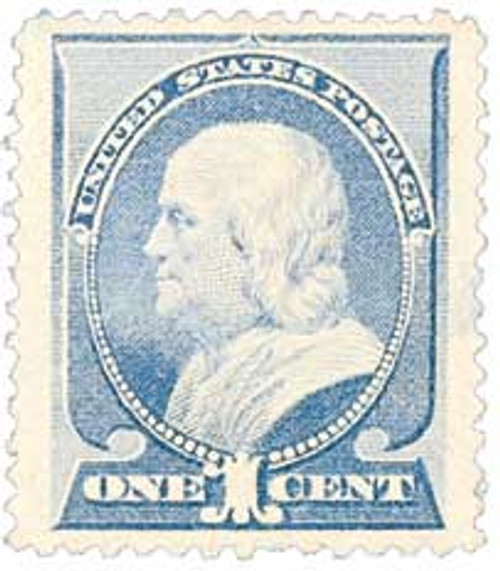
# 133 - 1880-82 1c Franklin, issued with gum
U.S. #133
1880-82 1¢ Franklin
1880-82 Re-Issue of 1869 Issue
Earliest Known Use: October 5, 1880
Quantity sold: 5,000
Printed by: American Bank Note Company
Method: Flat plate
Watermark: None
Perforation: 12
Color: Buff
The National Bank Note Company originally produced the printing plate for the 1¢ Franklin Pictorial of 1869. When the Continental Bank Note Company took over the printing of postage stamps in 1873, they were given the plates and dies. “Secret marks” were added to the plates by Continental as identification. A small horizontal dash was cut or etched with acid into the small ball to the left of the numeral “1.” The Continental Company used white wove paper. In 1879, the American Bank Note Company took over the Continental Bank Note Company and printed the 1¢ Franklin on soft, porous paper. The gum on these stamps was usually yellowish, but is sometimes found in shades of brown or white.
U.S. #133
1880-82 1¢ Franklin
1880-82 Re-Issue of 1869 Issue
Earliest Known Use: October 5, 1880
Quantity sold: 5,000
Printed by: American Bank Note Company
Method: Flat plate
Watermark: None
Perforation: 12
Color: Buff
The National Bank Note Company originally produced the printing plate for the 1¢ Franklin Pictorial of 1869. When the Continental Bank Note Company took over the printing of postage stamps in 1873, they were given the plates and dies. “Secret marks” were added to the plates by Continental as identification. A small horizontal dash was cut or etched with acid into the small ball to the left of the numeral “1.” The Continental Company used white wove paper. In 1879, the American Bank Note Company took over the Continental Bank Note Company and printed the 1¢ Franklin on soft, porous paper. The gum on these stamps was usually yellowish, but is sometimes found in shades of brown or white.










